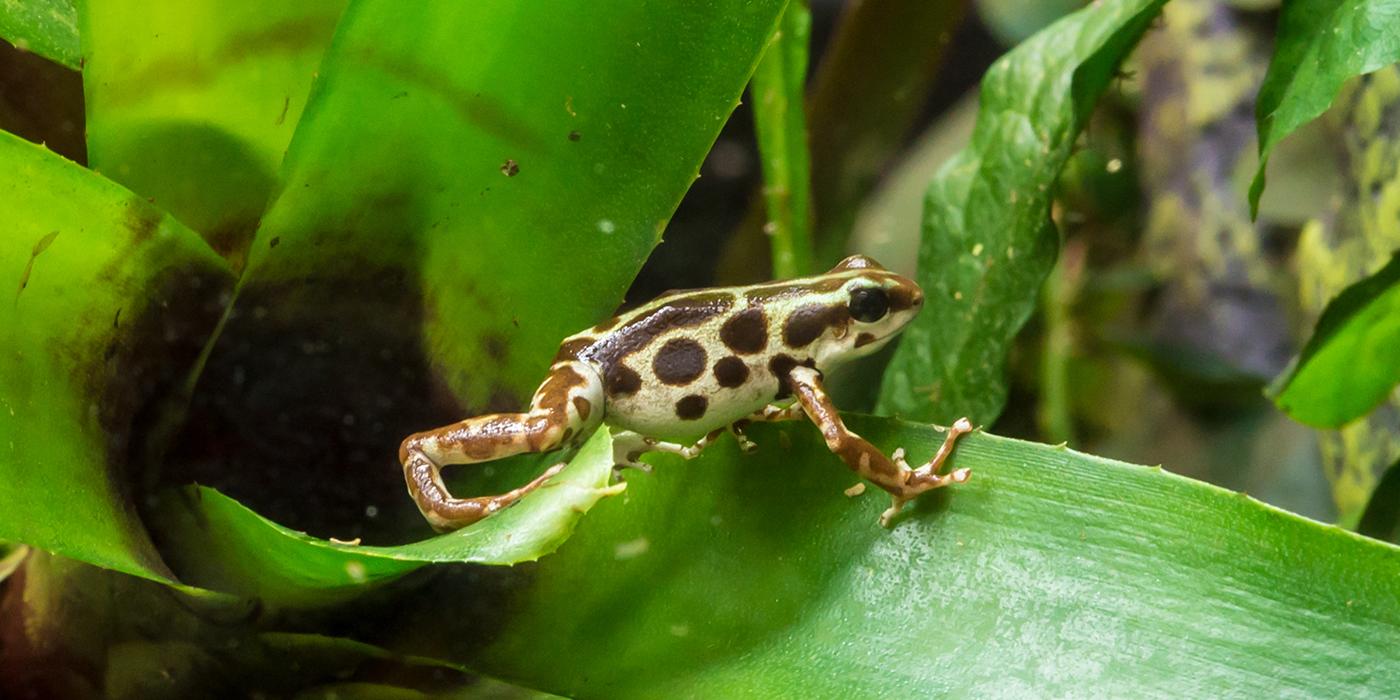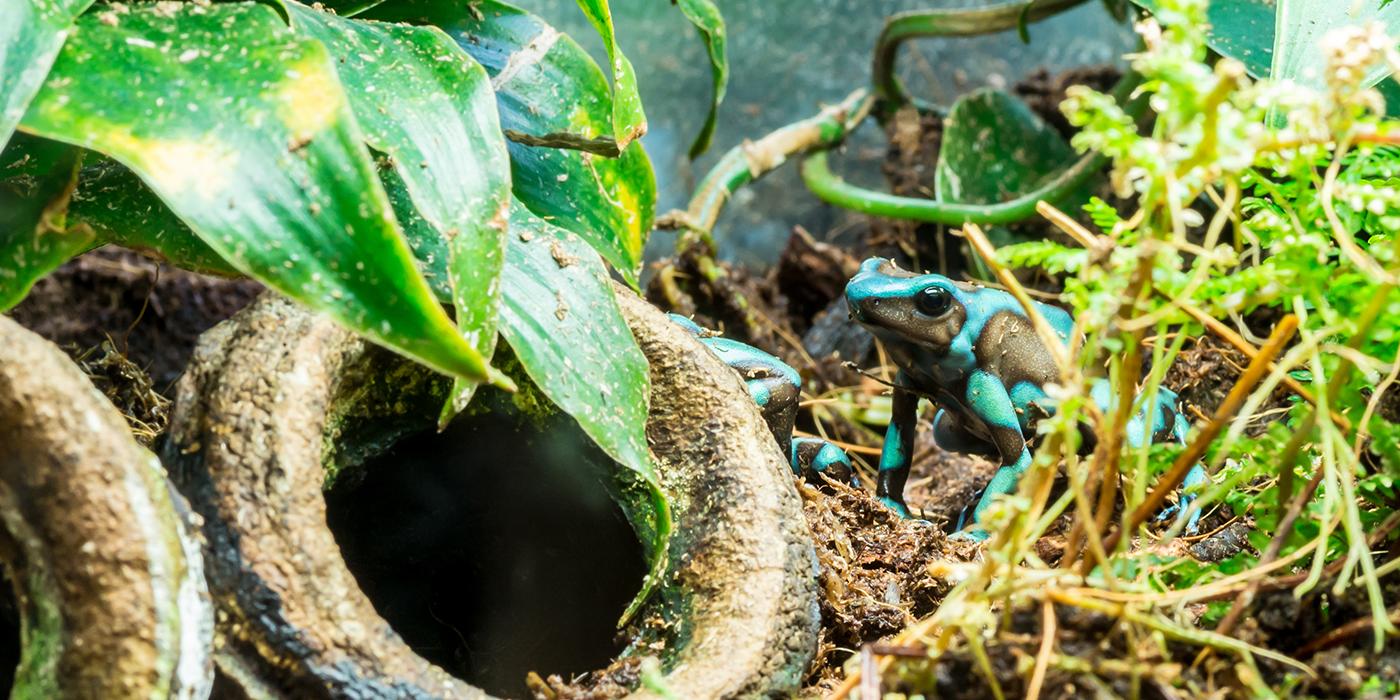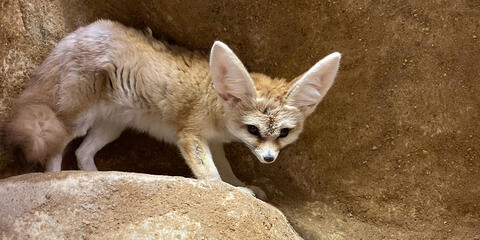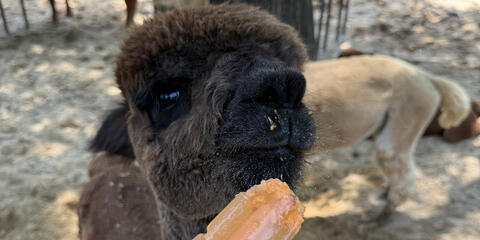Physical Description
These frogs are commonly known as poison arrow or poison dart frogs because indigenous community reportedly rubbed their arrow tips on the frogs' backs before hunting. However, only three species have actually been documented being used for this purpose, including the golden poison frog, the most toxic of all frog species.
All three of these documented species belong to the genus Phyllobates rather than the genus Dendrobates, which includes the most brightly colored frogs that are most often recognized as poison dart frogs. The golden frog secretes the alkaloid toxin batrachotoxin, which is of interest to medical researchers who are trying to develop muscle relaxants, heart stimulants and anesthetics from the toxin.
Poison frogs are known for their beautiful colors, and amphibians that have toxic skin secretions tend to have bright warning colors or patterns. It is theorized that these colors function as a visual warning, a learned response on the part of the predator.
A predator that finds a certain kind of amphibian to be distasteful will associate the warning color with the bad taste and, after one or more such experiences, will recognize the distasteful species and refrain from attacking. Aposematic coloration usually involves red, orange or yellow. Some animals have bright coloration that does not correlate to toxicity, presumably mimicking those animals in which color truly is a warning.
Size
Poison frogs are generally small species, about 0.75 to 1.5 inches (20 to 40 millimeters) in length.
Lifespan
Poison frogs in general can live for over ten years in human care. The tri-colored poison frog will live from 12 to 20 years.
Communication
Poison frogs can be heard calling in the flooded forest. Most species of frogs have well-developed vocal structures capable of producing a variety of sounds that serve to attract mates, advertise territories or express distress. Sound production is often the most common form of communication in animals that jump or fly because they would otherwise have a difficult time communicating by scent. Frogs produce sounds using their laryngeal apparatuses (larynx/vocal chords) and most males have vocal sacs that function as resonating chambers. Species of frogs can be identified based on their calls.
Food/Eating Habits
Poison frogs feed mostly on small insects such as ants and termites, which they find on the forest floor. Many species capture their prey by using their sticky, retractable tongues. Scientists believe that poison frogs gain their poison from a specific arthropod and other insects that they eat in the wild and that these insects most likely acquire the poison from their plant diet. As a result, poison frogs in human care on a diet of crickets and other non-poisonous insects are not poisonous themselves.
Most species have omnivorous tadpoles that will eat all sorts of food from algae and detritus to insect larvae and dead insects. Some species tend to be more carnivorous (such as the tri-colored poison frog) and eat insect larvae and other tadpoles. Females of some poison frog species place individual tadpoles in water in bromeliads and then periodically return to the site of each tadpole and deposit unfertilized eggs, which the tadpoles eat.
At the Zoo, they are fed small crickets, bean beetles, black worms and/or fruit flies daily and as a result, are not poisonous. Occasionally insects are coated with vitamin powder for extra nutrition.
Sleep Habits
Poison frogs are mostly diurnal.
Reproduction and Development
In wet tropical rainforests, both sexes breed throughout the year, with rainfall being the primary factor controlling the timing of reproductive activity.
Poison dart frogs display elaborate and diverse courtship behaviors. In general, the male will lead the female to a site that he has chosen to lay the eggs. Most of these species of frogs deposit their eggs inside leaf-litter, where it is dark and moist. At the Zoo, keepers make an artificial breeding "hut" for the frogs. Some species also deposit their eggs in bromeliads.
Courtship behavior can last for several hours and normally, the pair visit several deposition sites before they start mating. Courtship continues at the deposition site where the frogs start a mating "dance" consisting of mutual stroking and cleaning of the surface of the leaves.
Poison frogs' clutch size varies between species from one to 40 eggs per clutch. After the eggs are laid, the male fertilizes the clutch. However, in some species, the male releases his sperm before the eggs are laid. The pair will usually guard the eggs to make sure that they do not dry out.
After about ten to 18 days and depending on the species and temperature, the eggs have matured into tadpoles. Either males or females remain with, or periodically visit, the nest. All poison frog species carry their tadpoles on their backs. The adult sits in the remainder of the gelatinous egg clutch and the tadpoles will wriggle up the hind limbs and onto the back. The adult carries the tadpoles to a small stream, pool or other small body of water. Some species transport whole clutches at one time and are completely covered with tadpoles, others transport them one by one or only a few at a time. After several months, the tadpoles go through metamorphosis and become adult frogs.
Conservation Efforts
The destruction of rainforest habitat by fires and by humans for farmland has contributed to the decreasing numbers of these frogs in the wild. The illegal pet trade has also affected their existence. Finally, like many other species of frog and amphibian, these species faces the potentially devastating effects of the chytrid fungus.
Help this Species
- Be a smart consumer. Choose products made with sustainable ingredients, such as Smithsonian certified Bird Friendly coffees, which support farmers striving to limit their impact on wildlife and habitat.
- Choose your pets wisely, and do your research before bringing an animal home. Exotic animals don’t always make great pets. Many require special care and live for a long time. Tropical reptiles and small mammals are often traded internationally and may be victims of the illegal pet trade. Never release animals that have been kept as pets into the wild.
- Support organizations like the Smithsonian’s National Zoo and Conservation Biology Institute that research better ways to protect and care for this animal and other endangered species. Consider donating your time, money or goods.
- Share the story of this animal with others. Simply raising awareness about this species can contribute to its overall protection.




